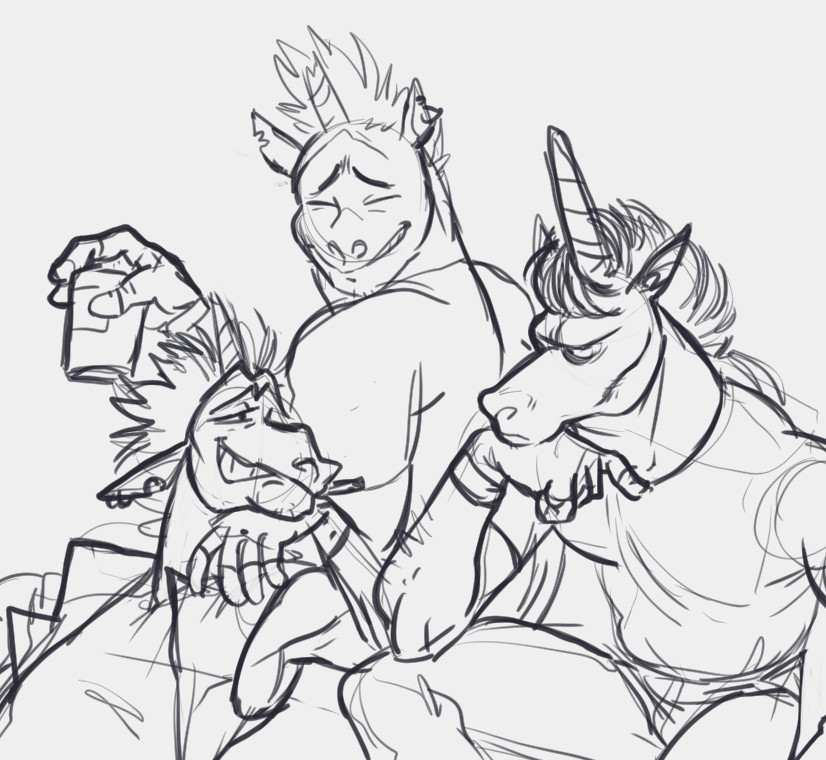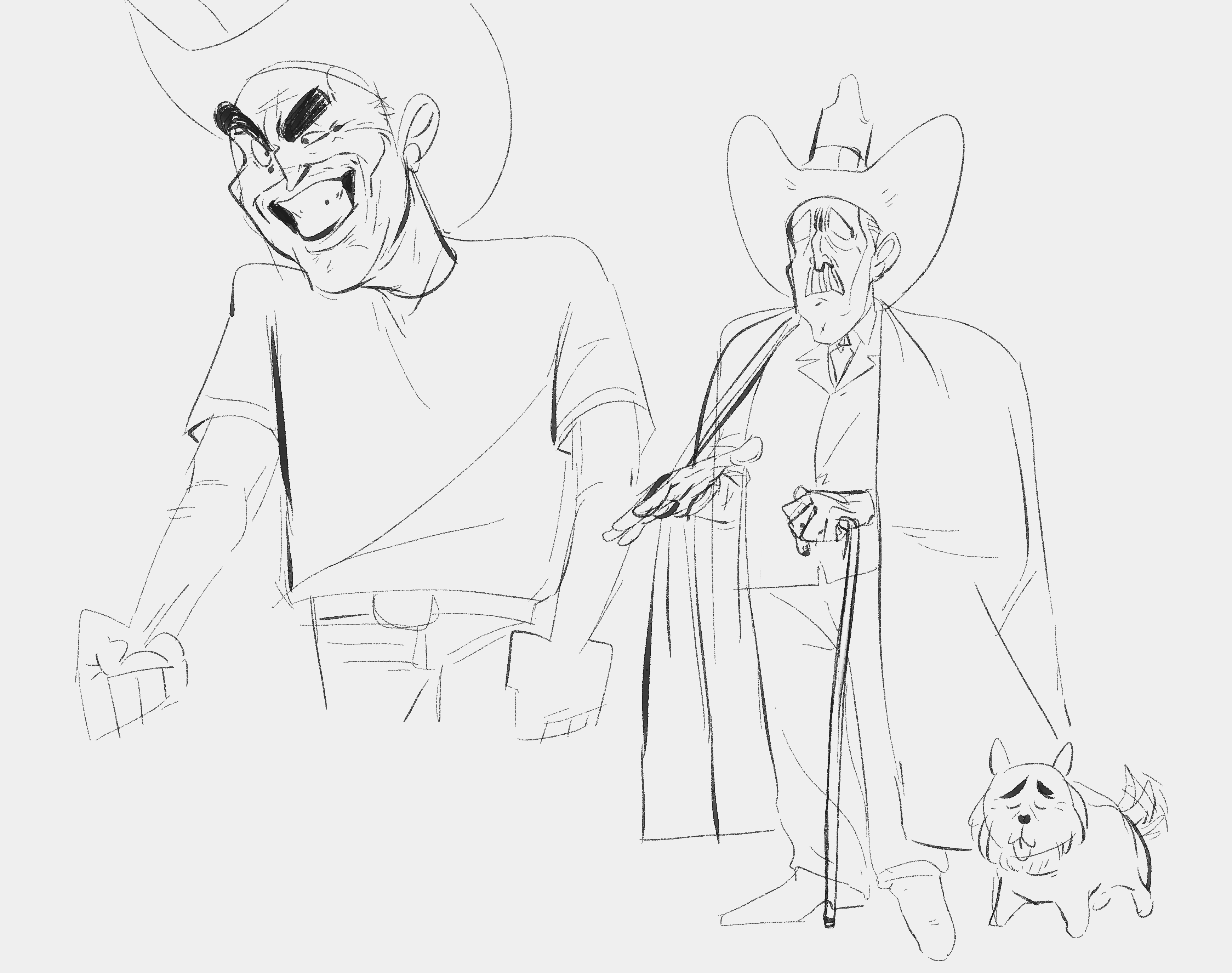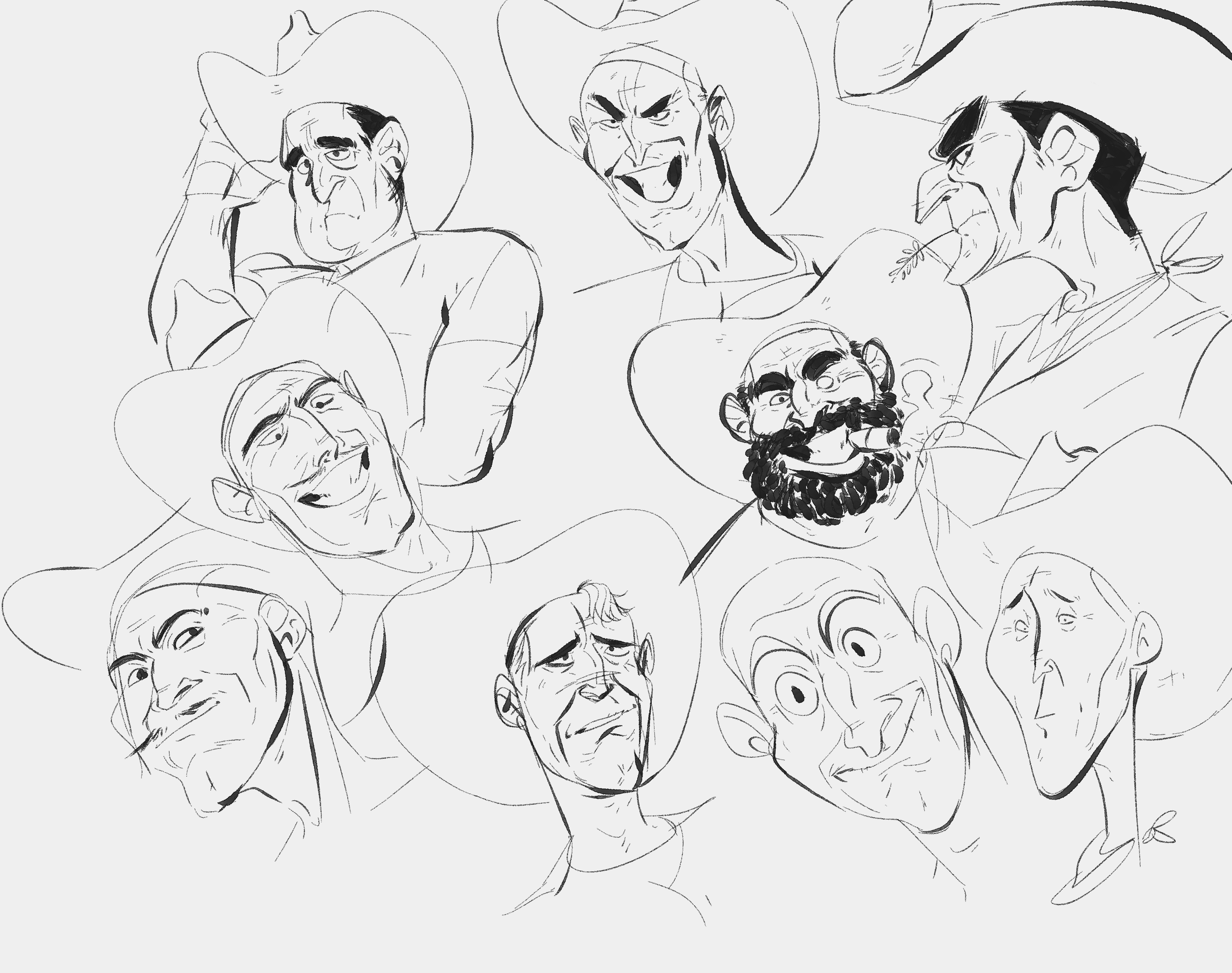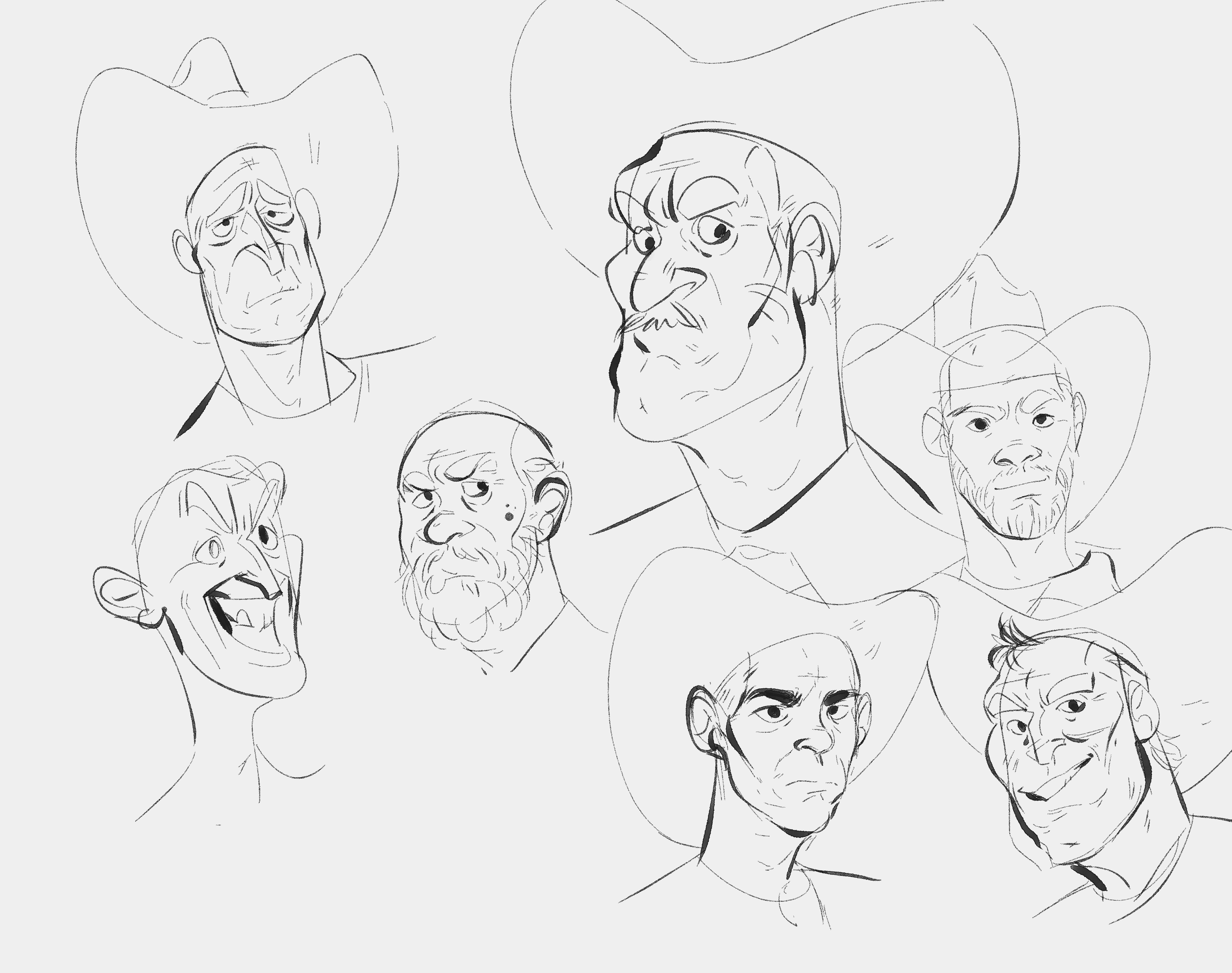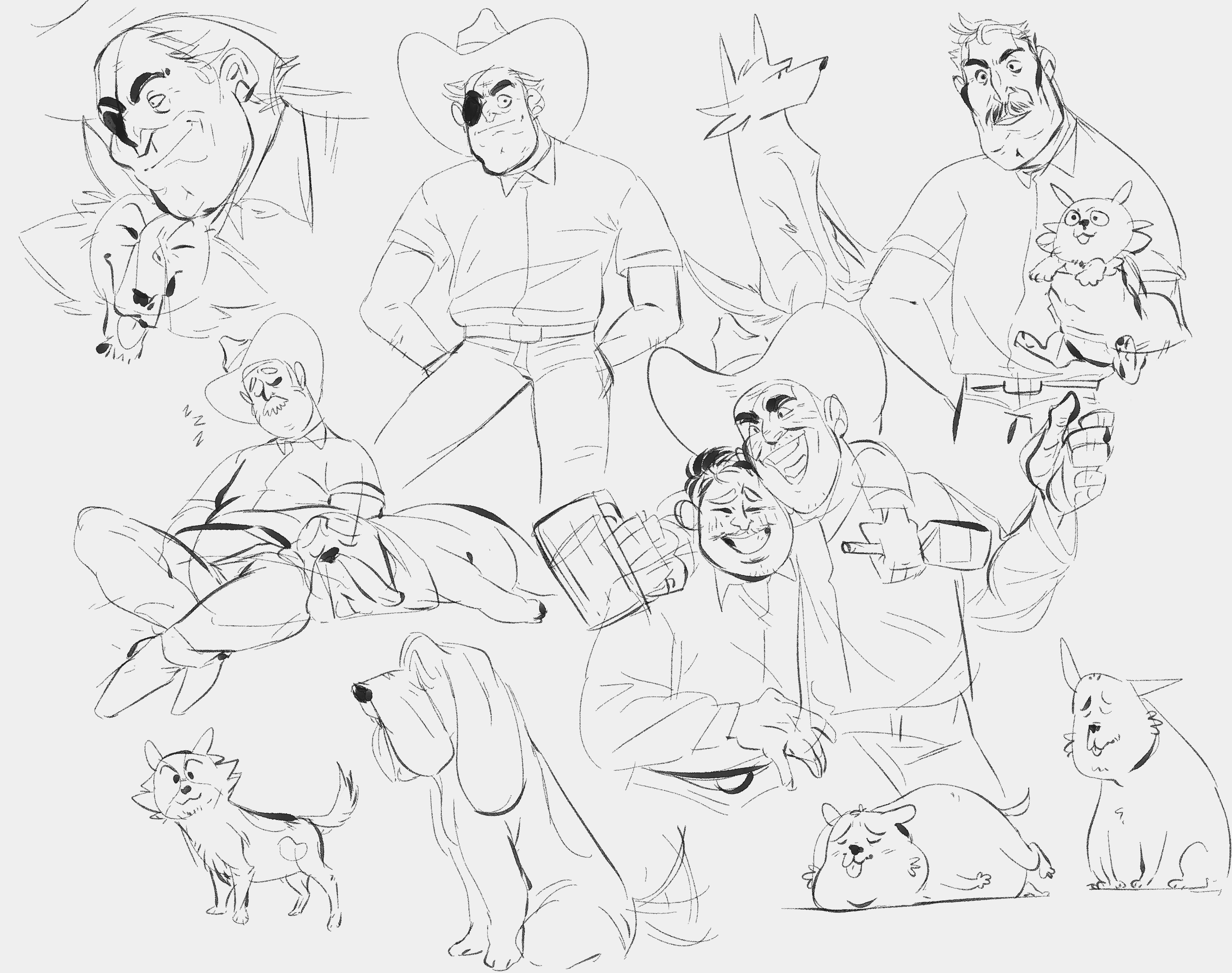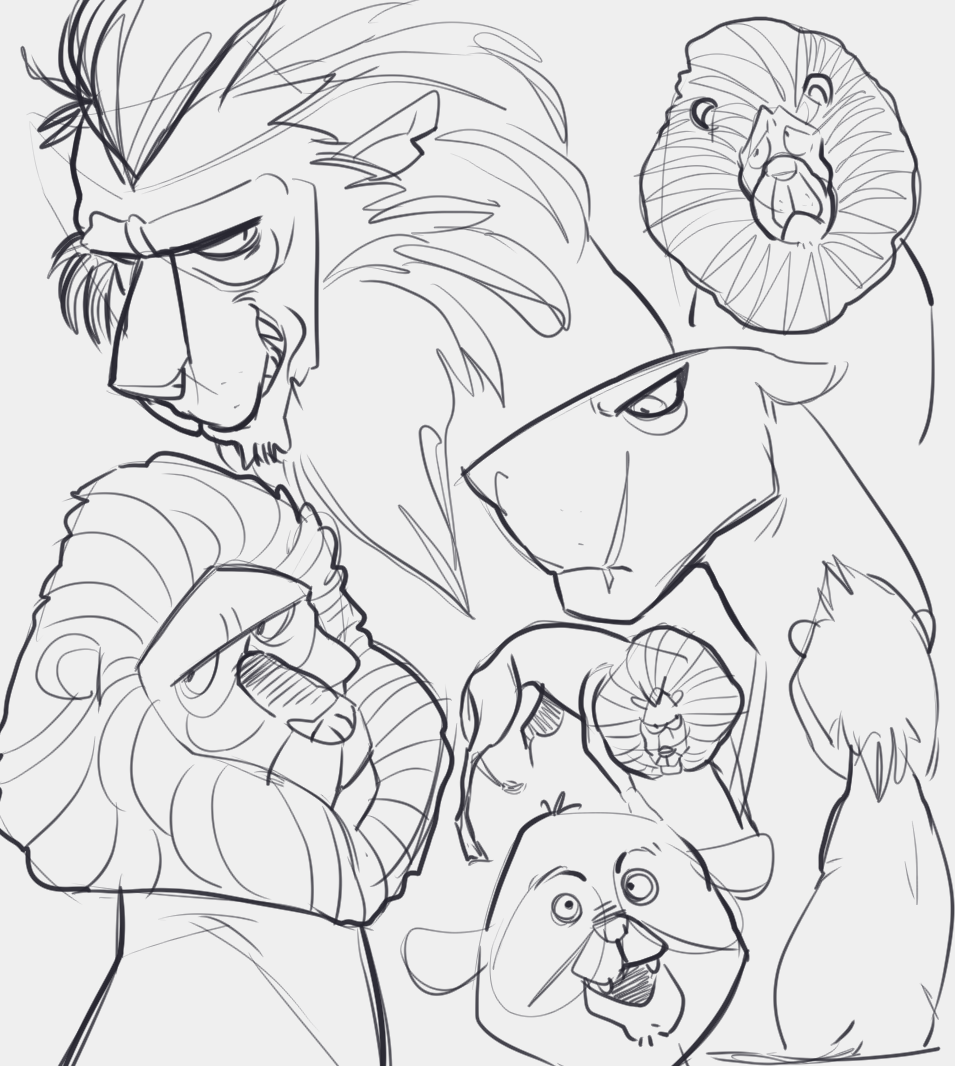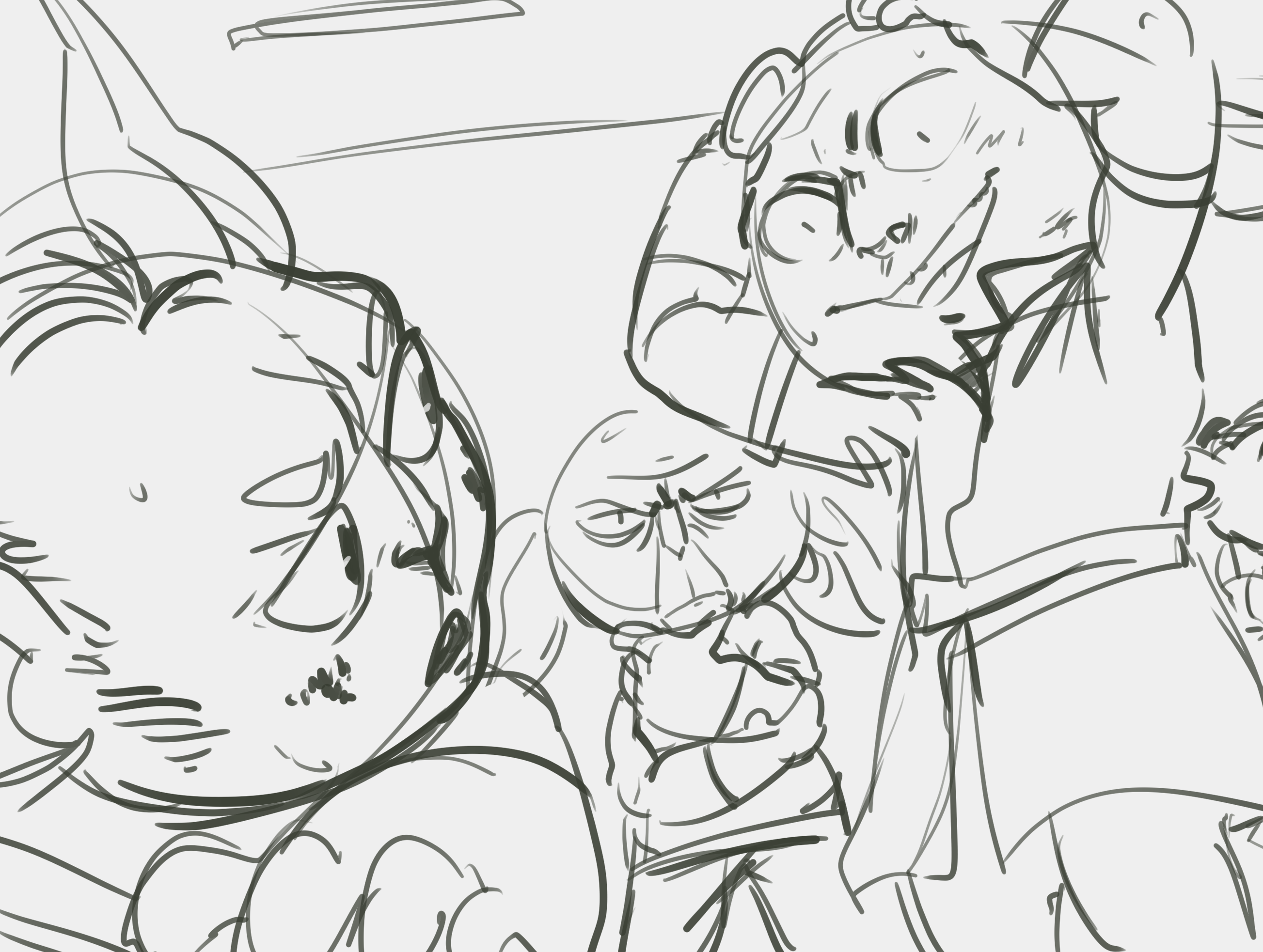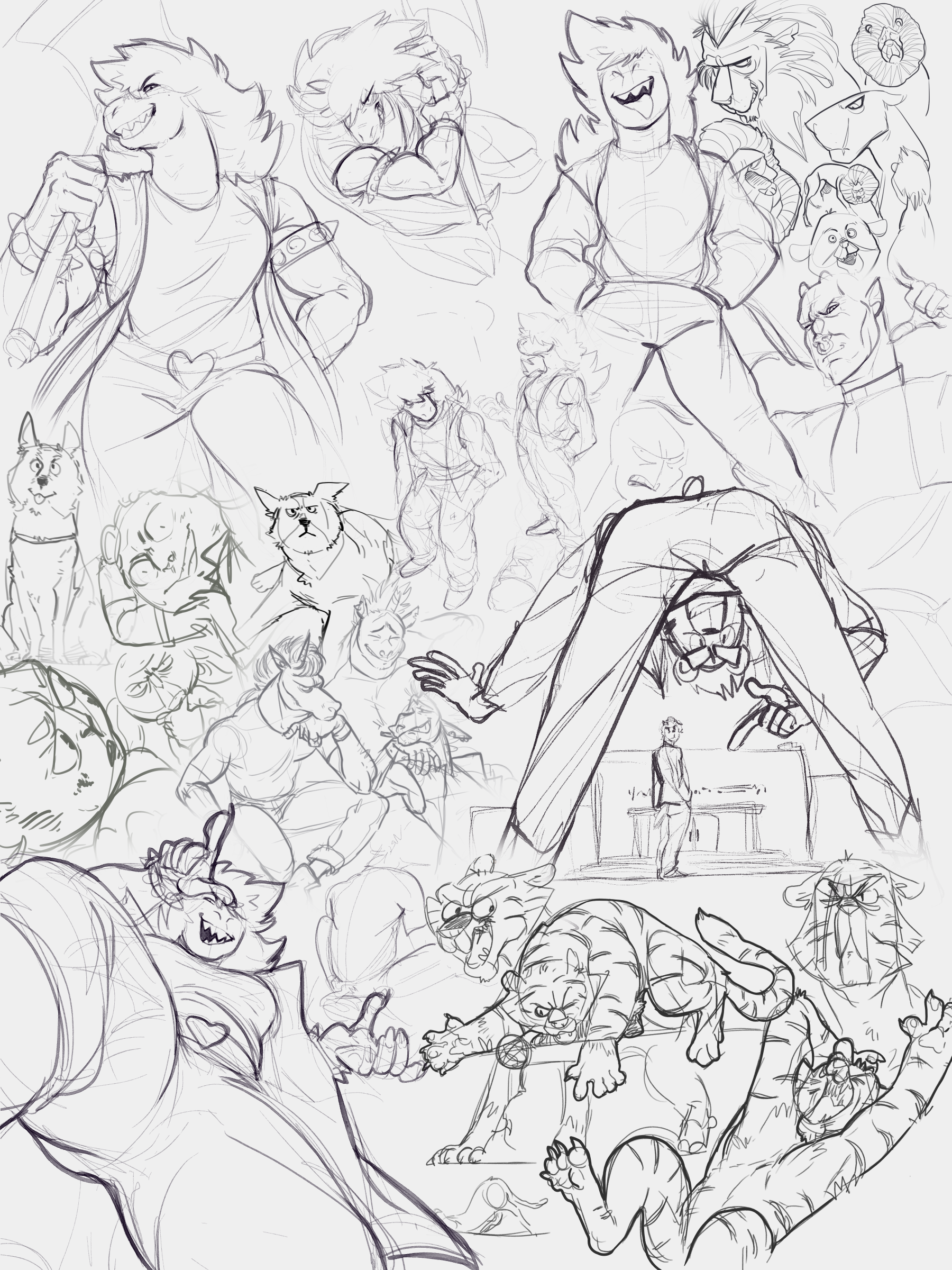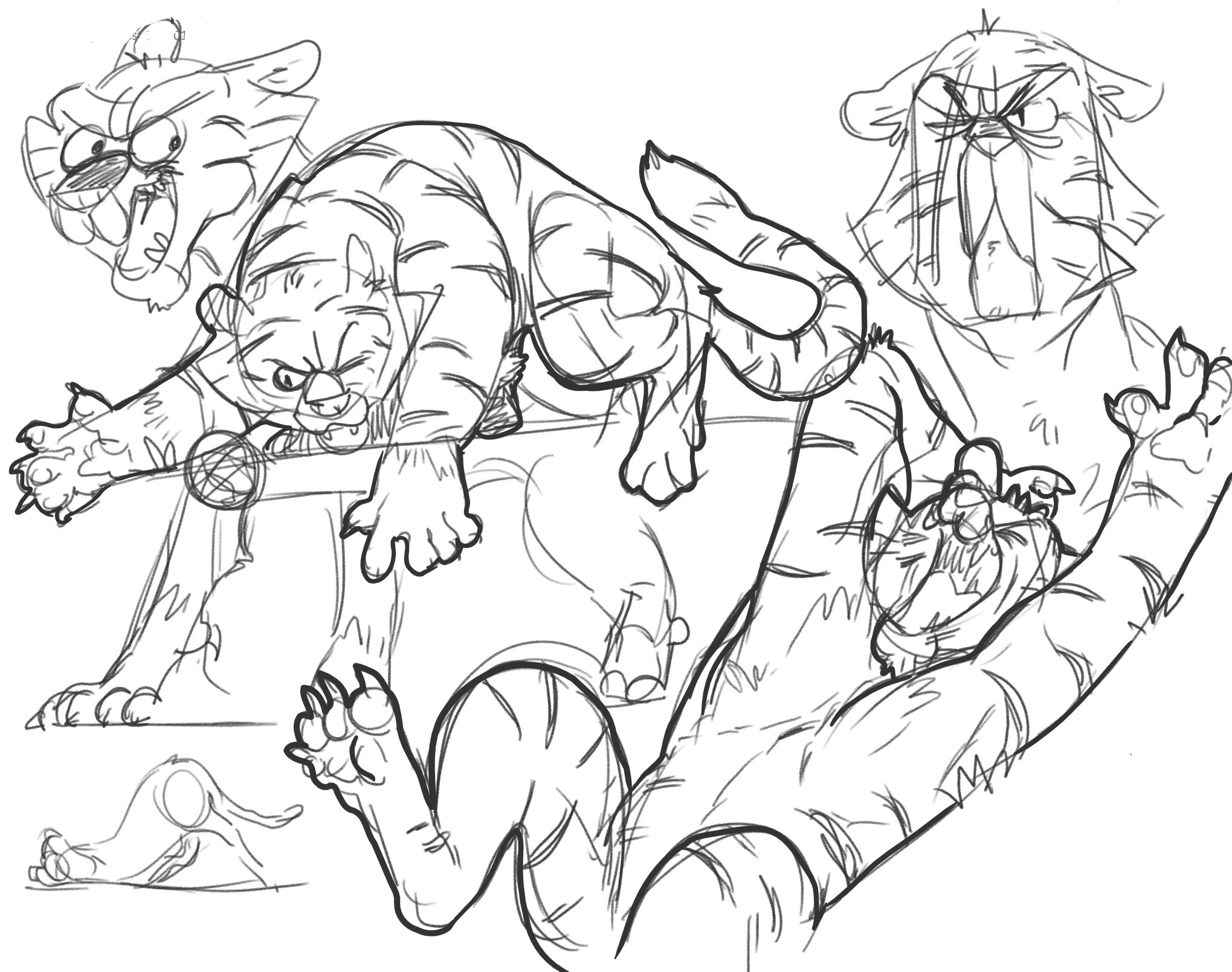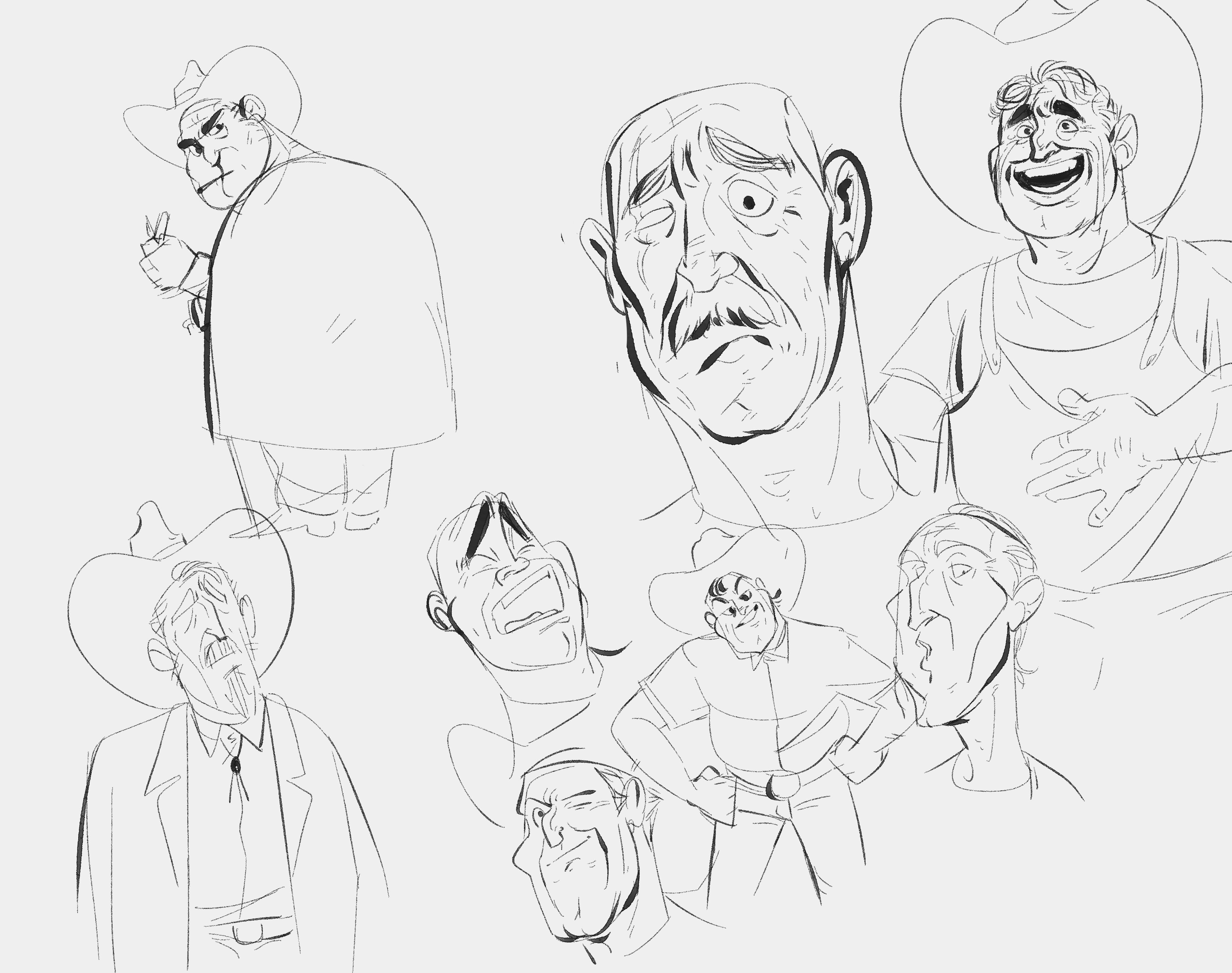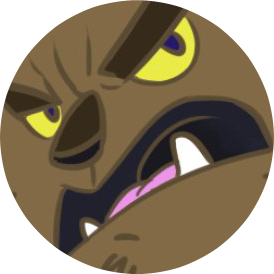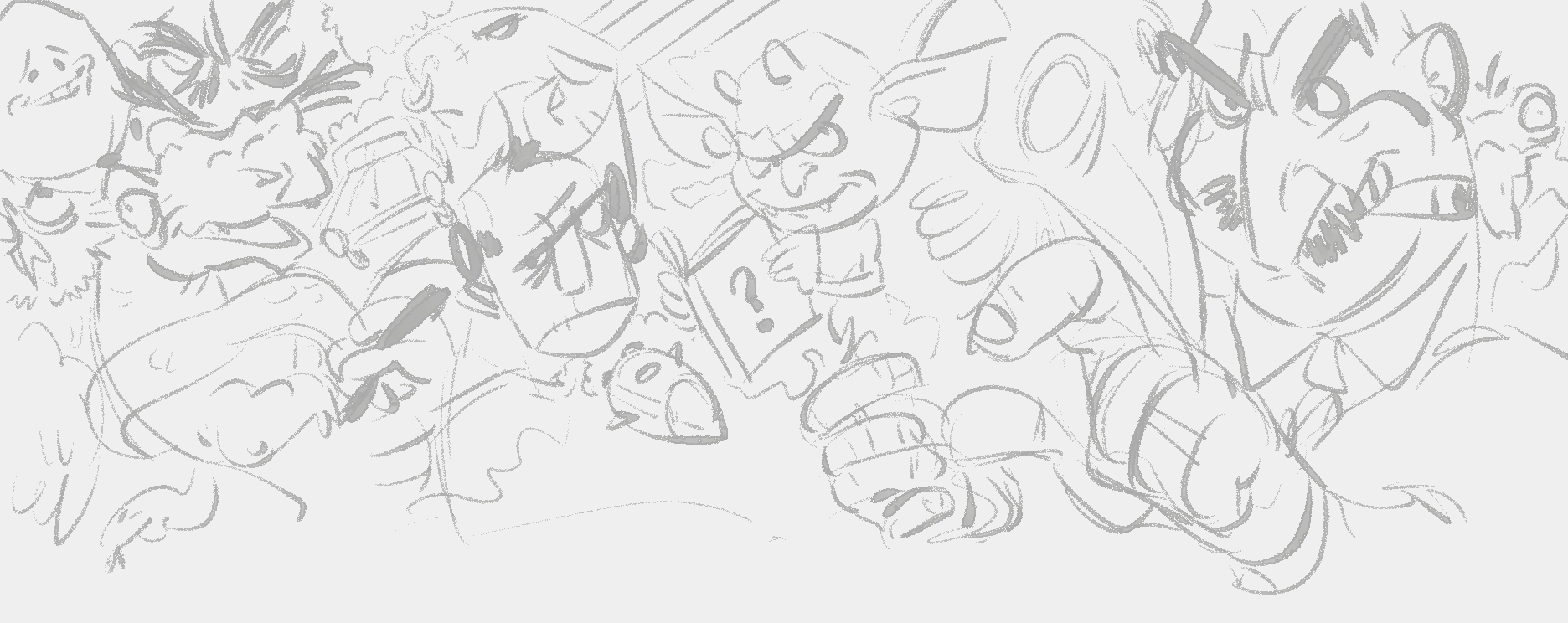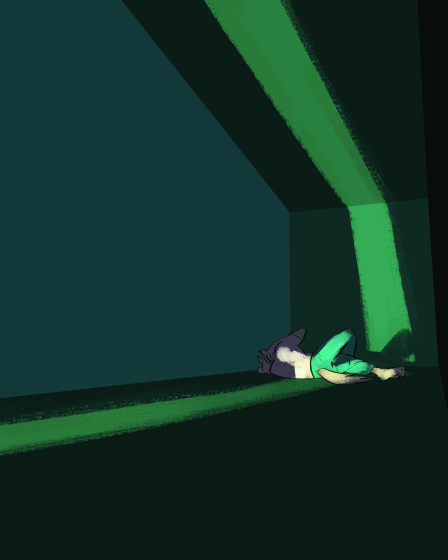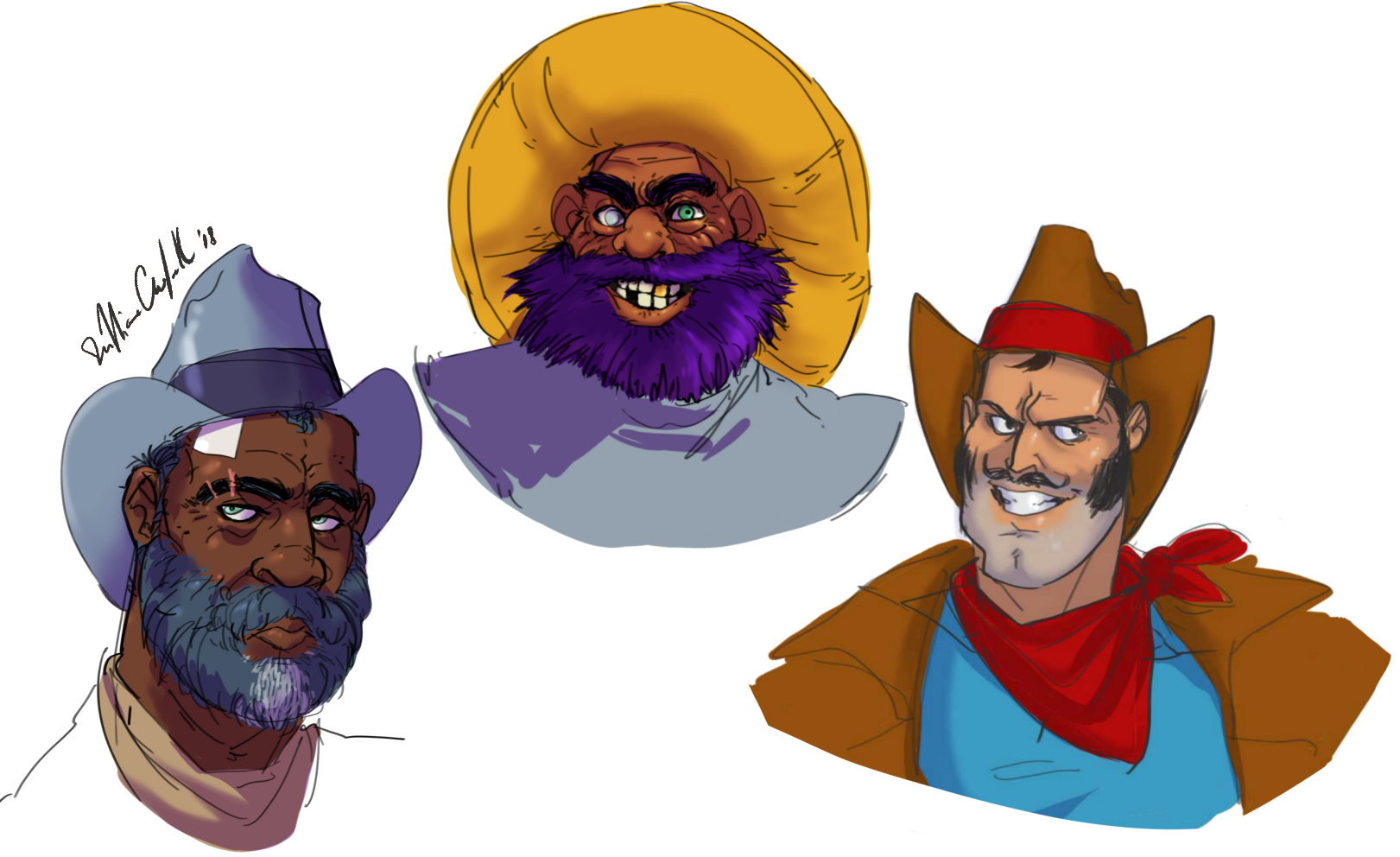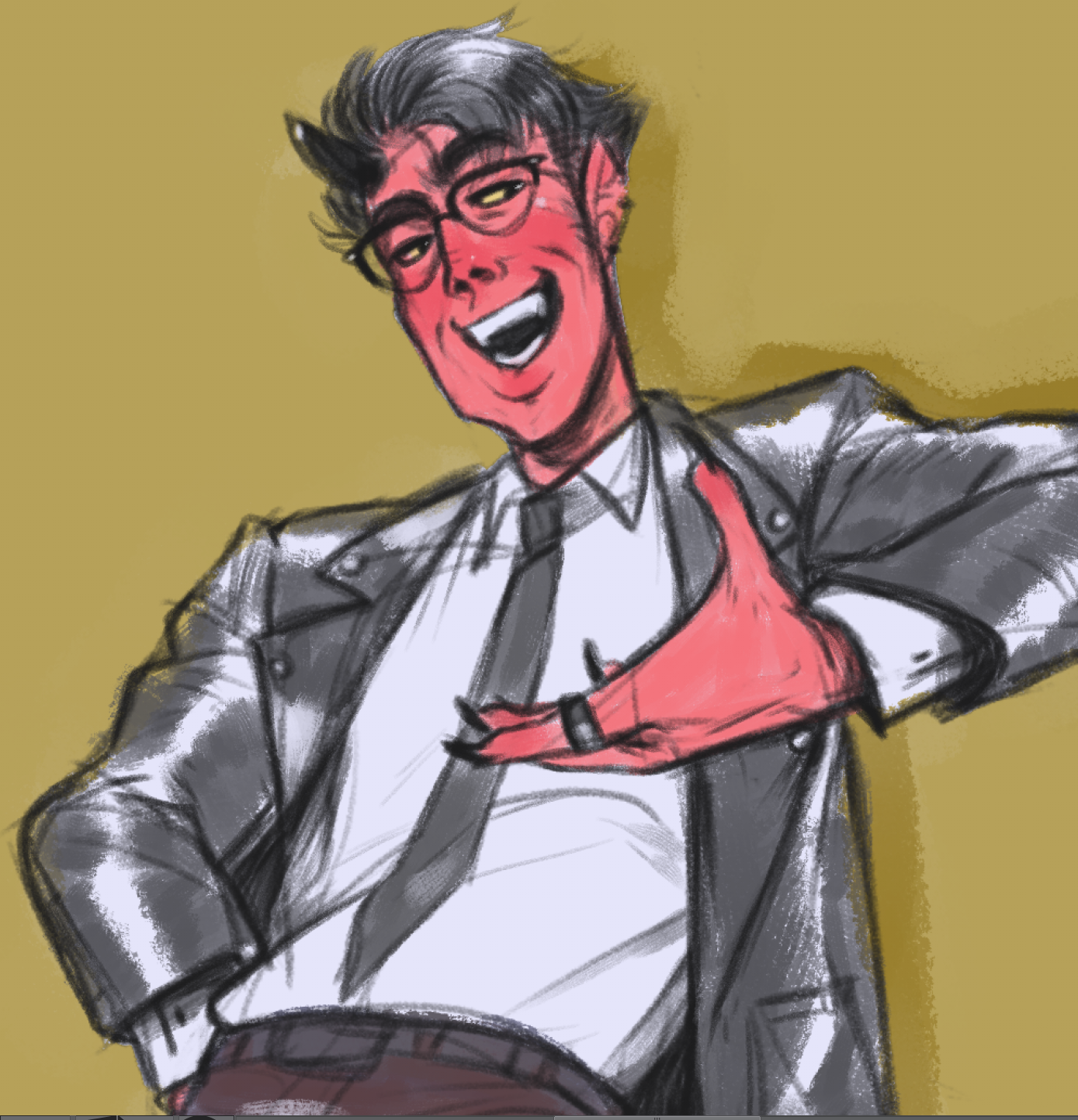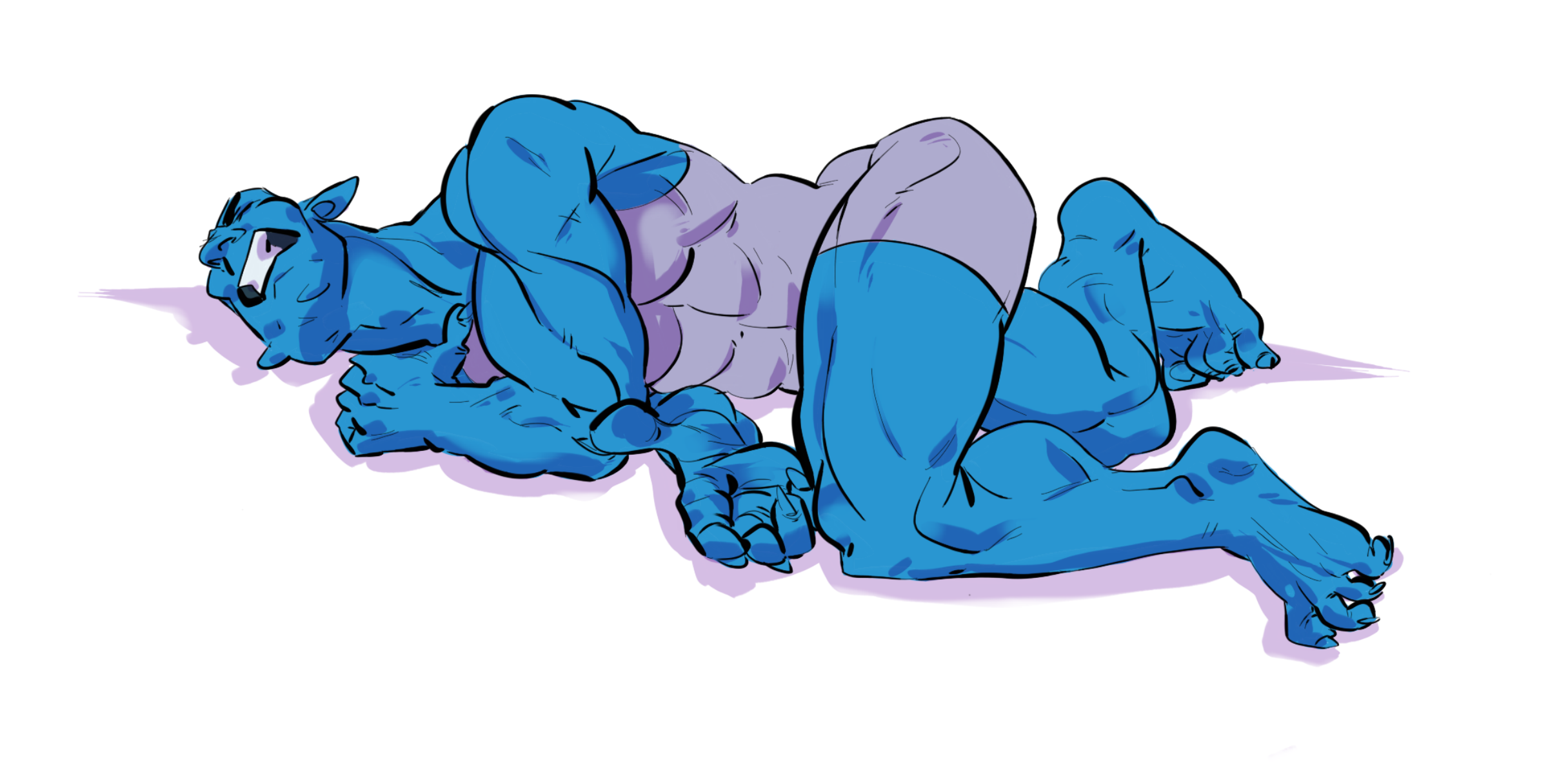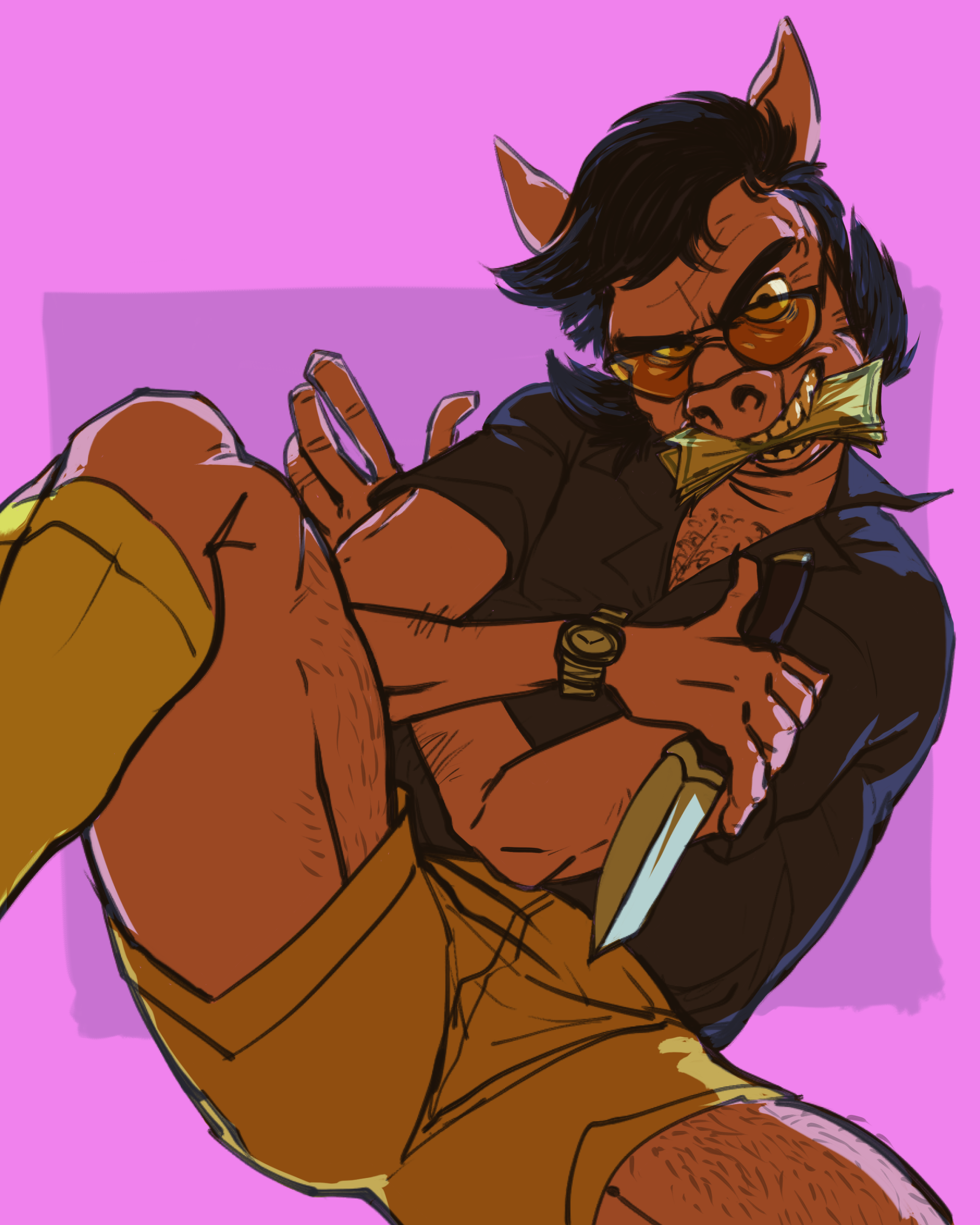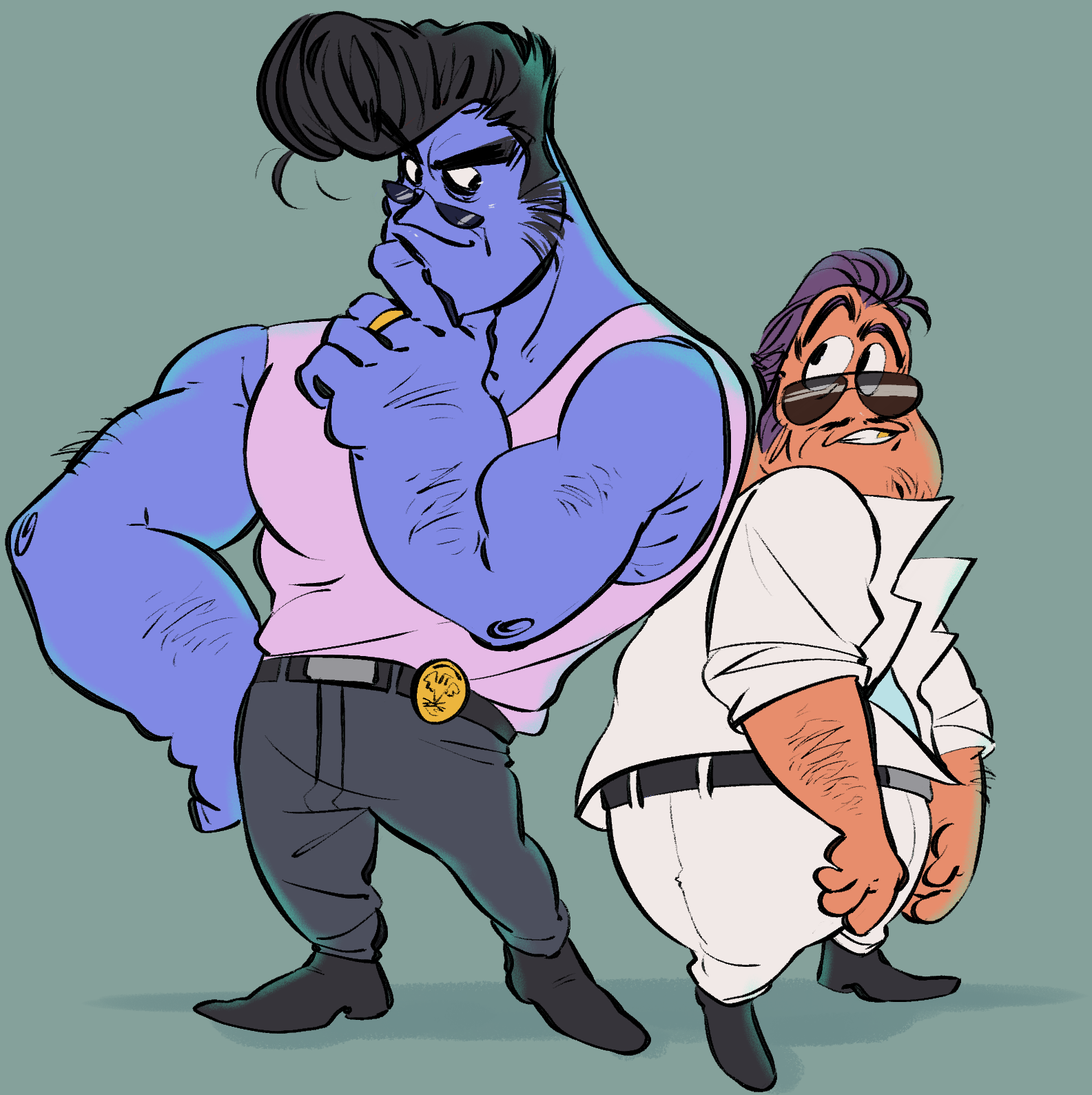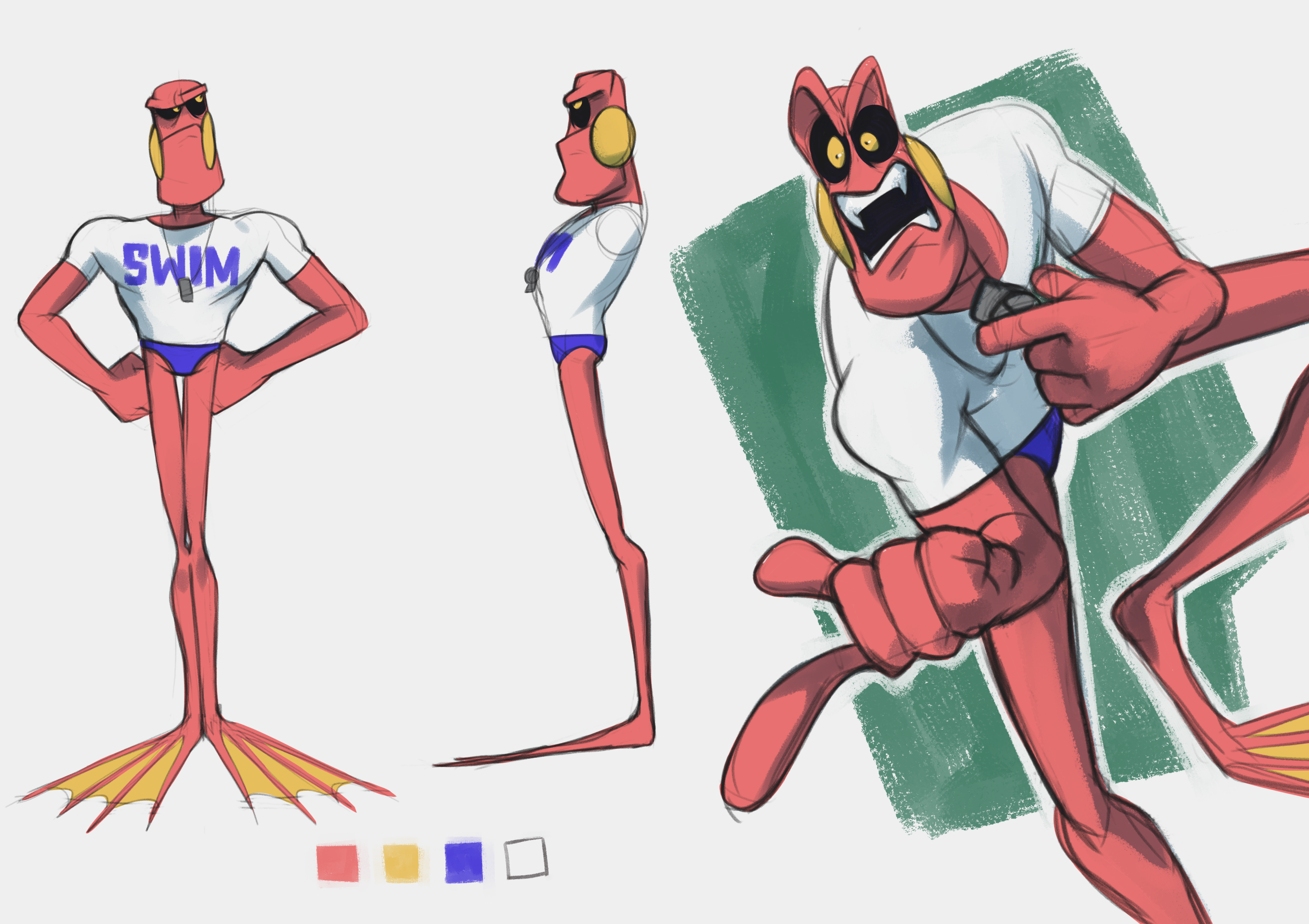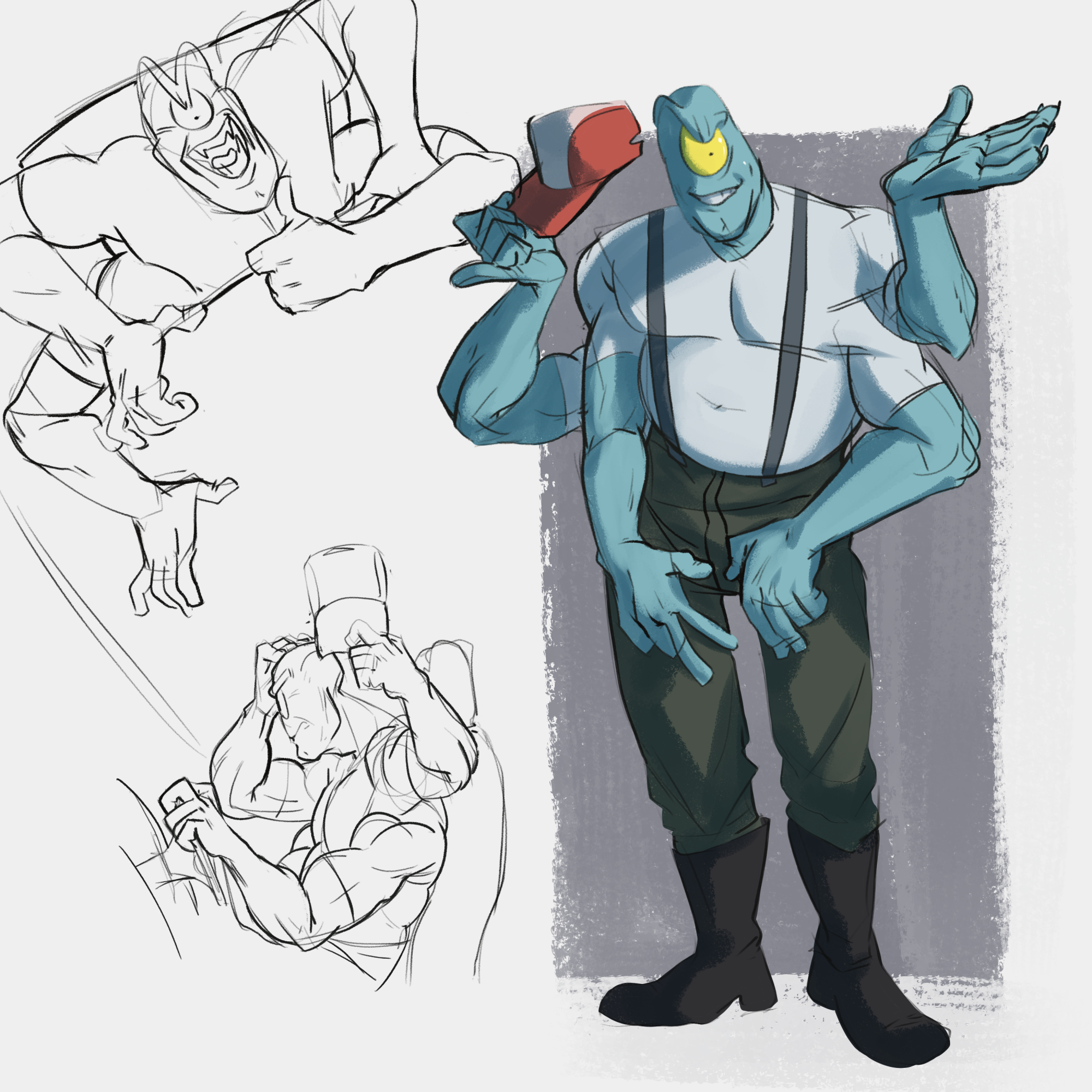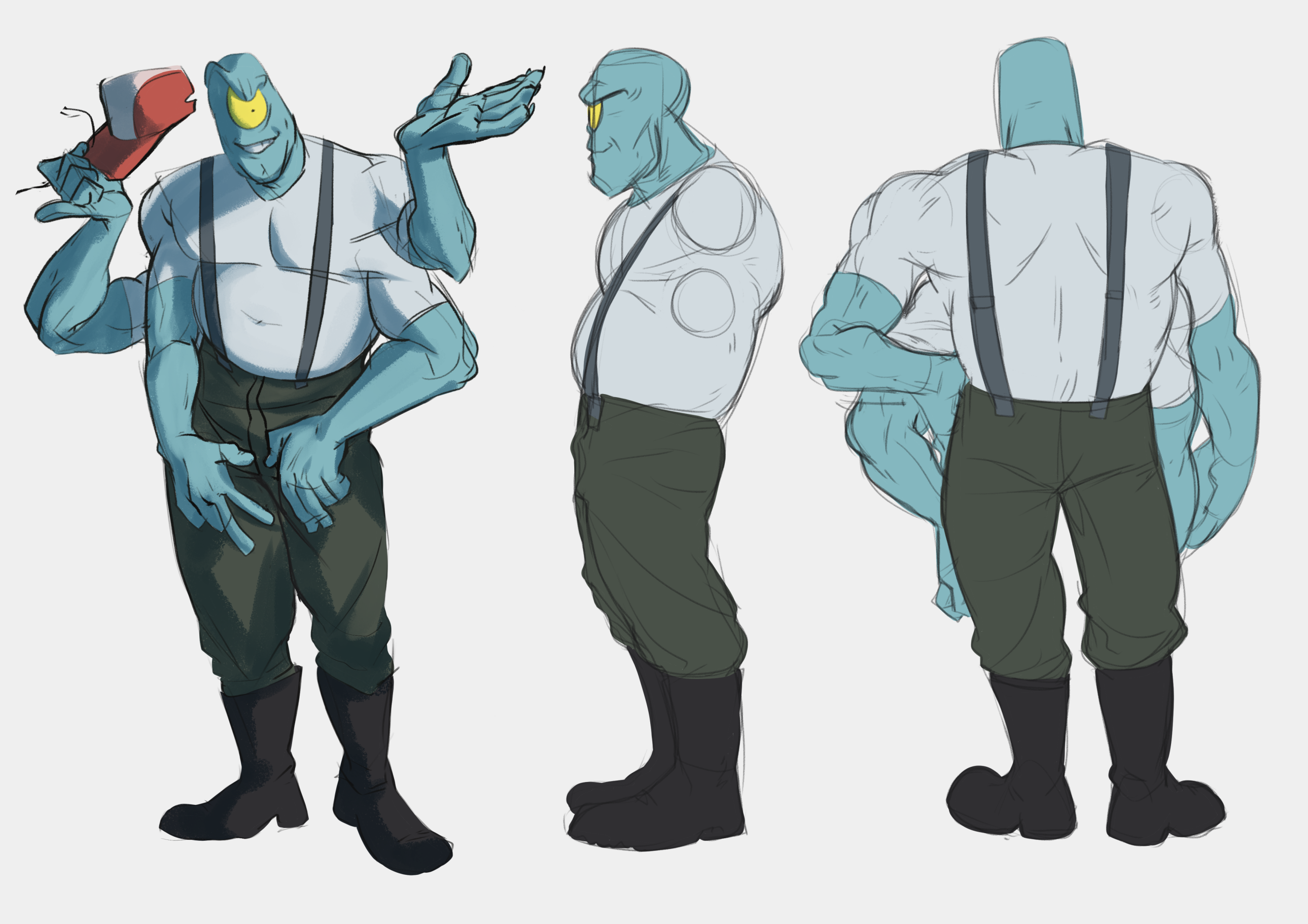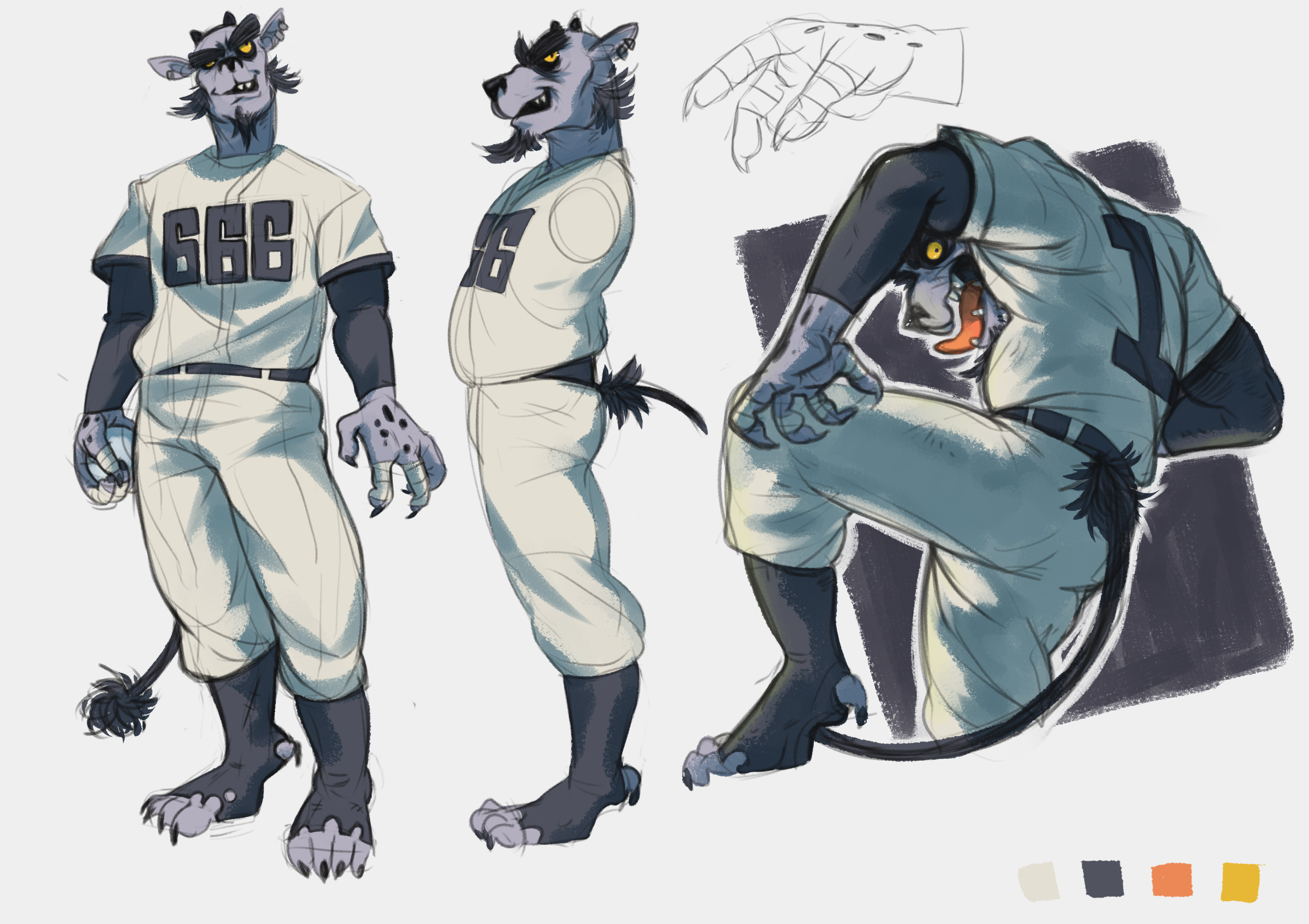Senior Project: Mood Indigo
This project follows a loose story of a group of musicians in the late 1960s, as jazz is maturing as America's most definitive genre. As this project progressed throughout the semester, I found myself becoming more fascinated with the abstract ideas that underpinned my main decisions. Namely, the shape of light started to become the main draw of the animated pieces as a way to drive composition across multiple frames. I began to think more literally of how every frame could be a painting. This project resulted in the following: a series of animations, a series of character illustrations, and accompanying written works connecting the character to the musical inspiration.
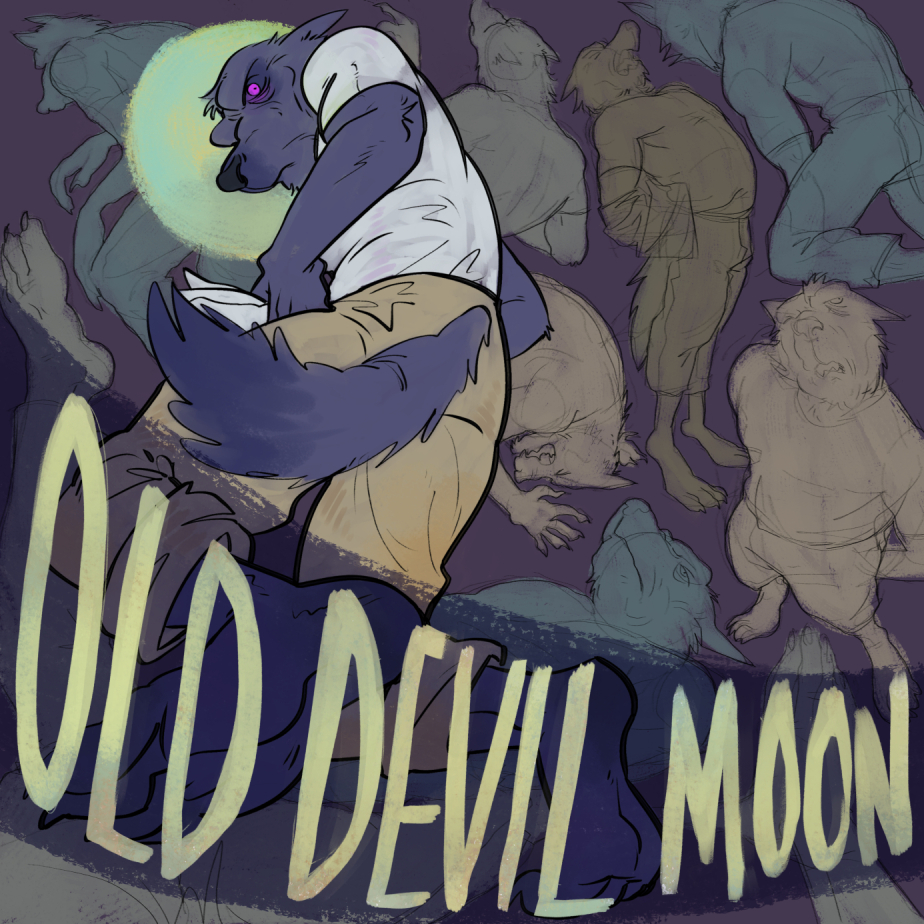
Wolf
Wolf is a down-and-out wanderer who bounces between jobs after recently leaving the police force. Occasionally he finds himself playing piano at a local club for both the tips and the interesting cast of regulars. Wolf is very much a night person, and that’s not just because of his species. For years he’s been stuck in his wolf state, unable to transform back. He begrudgingly befriends a few others, and they quickly form a new bond through their shared love of music.
Some of the key inspirations for this character include Chet Baker and Bill Evans, both of whom are important figures in the subgenres known as cool jazz and modal jazz. Here I’d like to argue that jazz lends itself to the “tragic artist” archetype, at least in a pop cultural perspective. These are figures who are creative through their lives of heartache and loss, contributing to the new definition of “cool” being synonymous with suffering. The nearly literal “birth of cool” happened when Miles Davis released his album with that exact name, which quickly became a definitive release in the history of cool jazz. The defining characteristics of cool jazz are: slower tempo, relaxed melodies, and more formal arrangements. With this in mind, Wolf’s character design features understated clothing and a cold, muted color palette , in contrast with the other characters in this series.
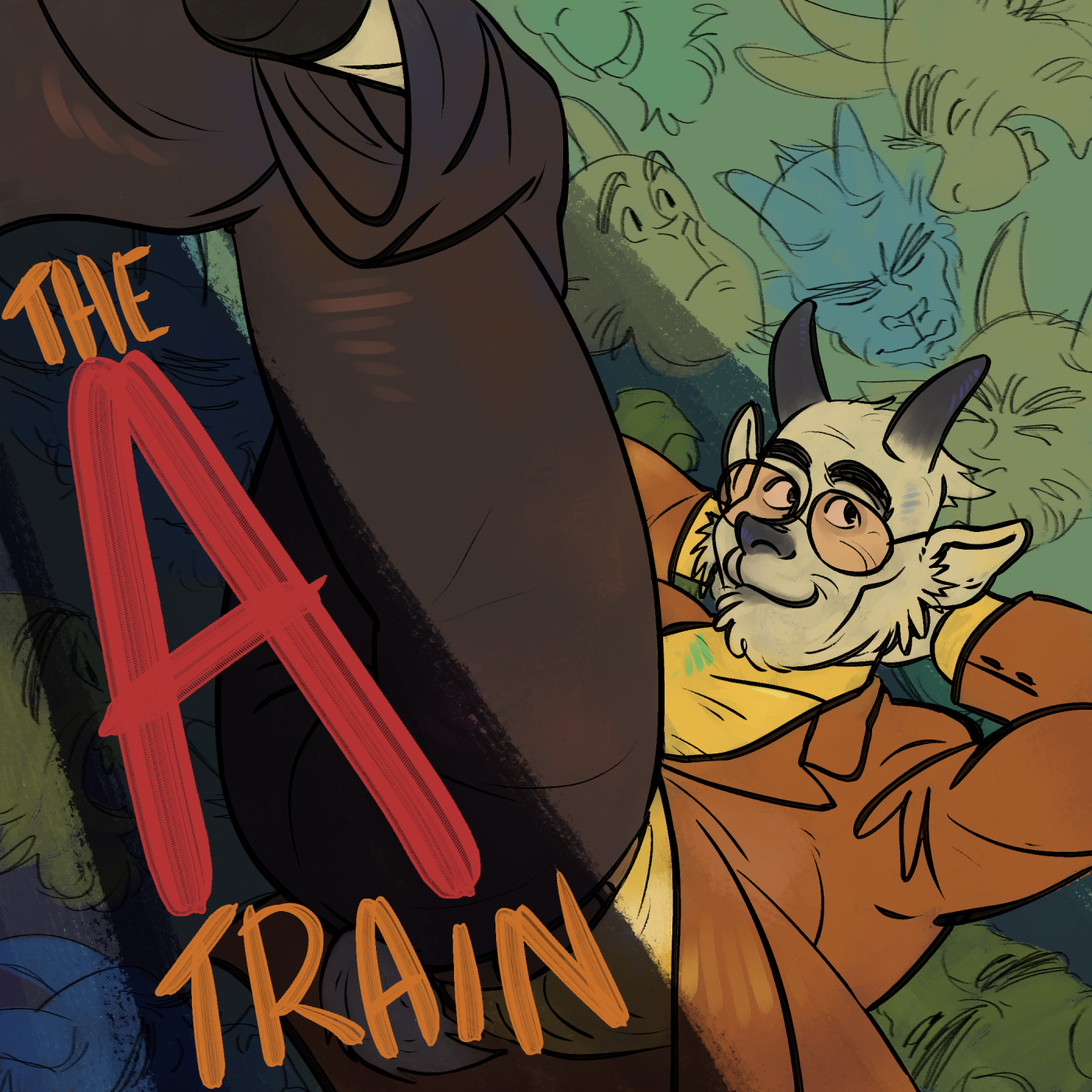
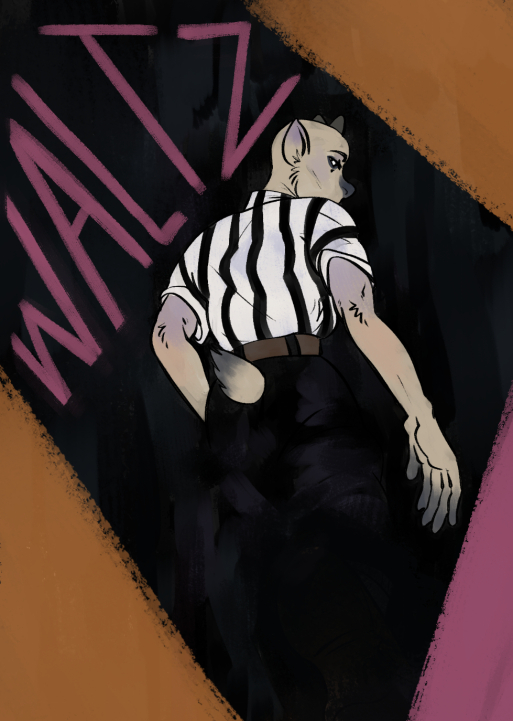
Fauns
The fauns are a pair of students who left home quite early, hoping to find their way beyond the confining life of the countryside. Miller (who also goes by the name Million) is especially hopeful and optimistic; a bright-eyed traveler who sees only the positivity in creation. His sister is equally excitable, though she may not show it. They keep each other grounded in the cold heartlessness of the inner city.
As mentioned in Wolf’s story, technicality is but one faction of jazz. The satyrs were inspired by more upbeat figures like Louis Armstrong, Duke Ellington, and Count Basie. These people are commonly associated with the more public facing subgenres of big bang and swing (though for the sake of this discussion, I will be collectively referring to them as just “swing”). The most popular forms of swing were those that were danceable, with a constant rhythm, bright melodies, and just the right amount of unpredictability. Improvisation is an integral part of all subsets of jazz, and swing is no exception. At its core, it’s all about spirituality and liberation. If the piece can make you feel something, then it is undoubtedly a success. Oftentimes, the piece would move you in a literal sense, as swing saw its rise during the dance craze of the 30s and 40s. The reason they were so danceable is due to the constant, easily accessible rhythms and basic chord patterns. You can think of this as a predecessor to modern pop music, which takes a very predictable set of sonic patterns and arranges them into a number of new ways depending on the piece. The ever-important improvisation took place over top of these basic foundations, constantly evolving the piece into something exciting and unpredictable.
In creating the fauns, mythology played an important role in finding a connection to music. Fauns are associated with the Roman God Faunus, who is equated with the Greek God Pan. Pan was responsible for the creation of the syrinx (or pan flute). After taking my own creative liberties with this idea, it is for that reason that I decided to give Million a brass instrument, the trumpet. Pan has further musical connections in pastorals and impromptus, the latter having special relevance to jazz music. The concept of an impromptu can be seen as a sort of jam session where musicians would improvise over a piece, letting it evolve naturally as the mood saw fit. As mentioned, this freedom is an essential aspect of the music and people involved. The basis for these two characters is freedom in both a musical and physical sense. Musically, I’d like to tap into the simultaneous acts of familiarity and freedom found in swing music. They both left their homes in search of opportunity in a large city, leaving behind the comfort of familiarity. With this in mind I intend for them to serve as a sort of foil to Wolf, who is a seasoned city dweller with a difficult heart.
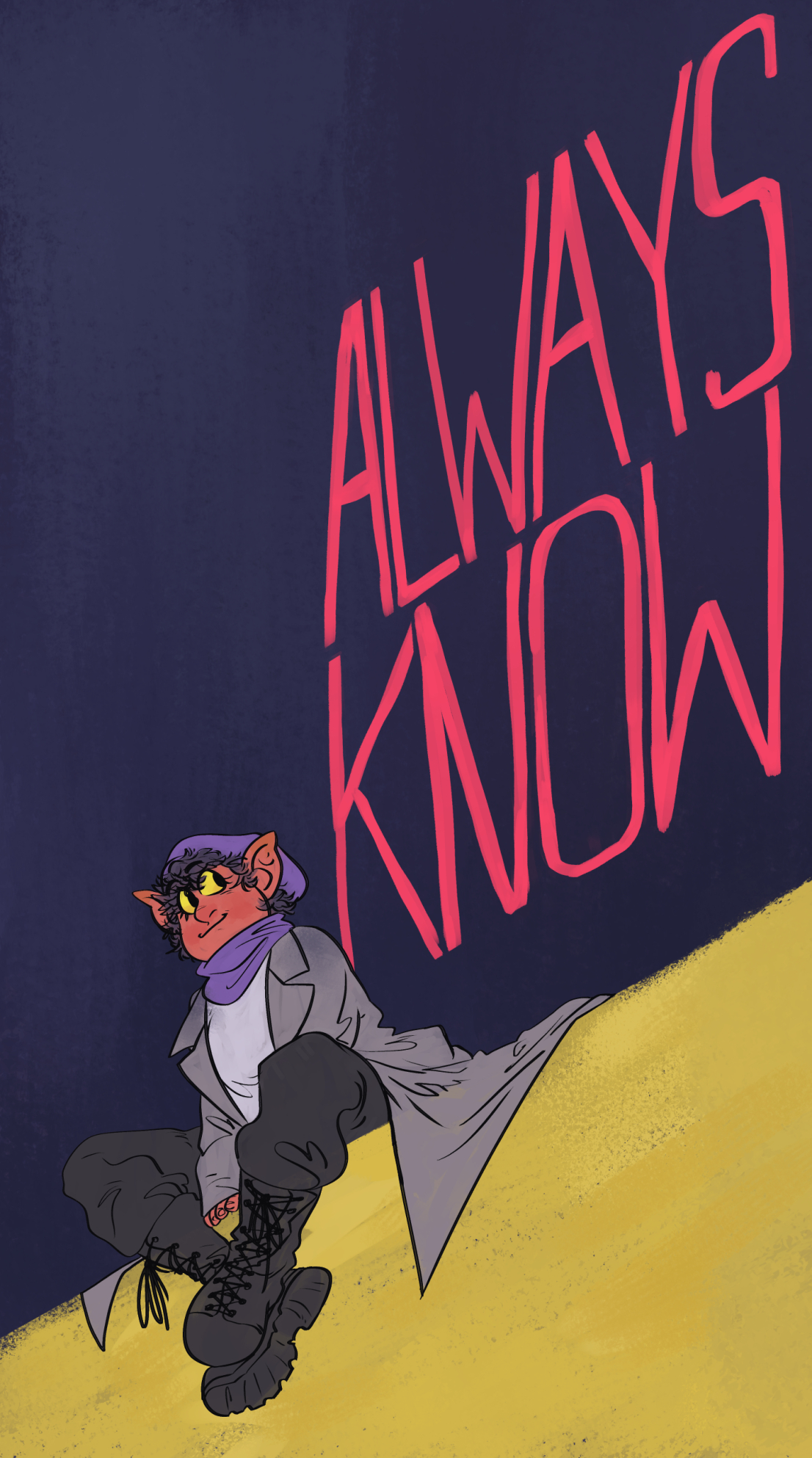
Goblin
She’s an orphan that spends her days wandering the city streets looking for anything to spark her interests. This frequently finds her at the bar where Wolf and the Faun siblings play. Despite the overwhelming dreariness of her situation, there is a light of innocence that never fades.
The idea of deceptive simplicity is best represented by jazz pianist Thelonious Monk. Historically he had been biographed as “eccentric” and “childlike,” though this was never really the case. Monk had an innately profound understanding of his music. Though the melodies were sometimes simple and straightforward, there was always something going on beneath the hood to keep the audience on their toes. His improvisational technique required some type of innocence in order to tap into his innate sensibility, and this is summarized by his famous quote: “always know.” My intention with this character is to channel that innocence as a sort of filter for the complexities of life and emotion. Her being a child is not to say that she is oblivious to difficulty, but that she (unlike the other members of the cast) has a uniquely simplified view of her surroundings.
Character Drawings
Character drawing forms the heart of everything that I do. I've been drawing since I was a kid, and I use this skill in some form in all of my projects (creative or otherwise). My most prevalent motivators are narrative and expression. I hope you can feel the emotive and unique personalities that each of my drawings seek to portray.
Sketchbook
